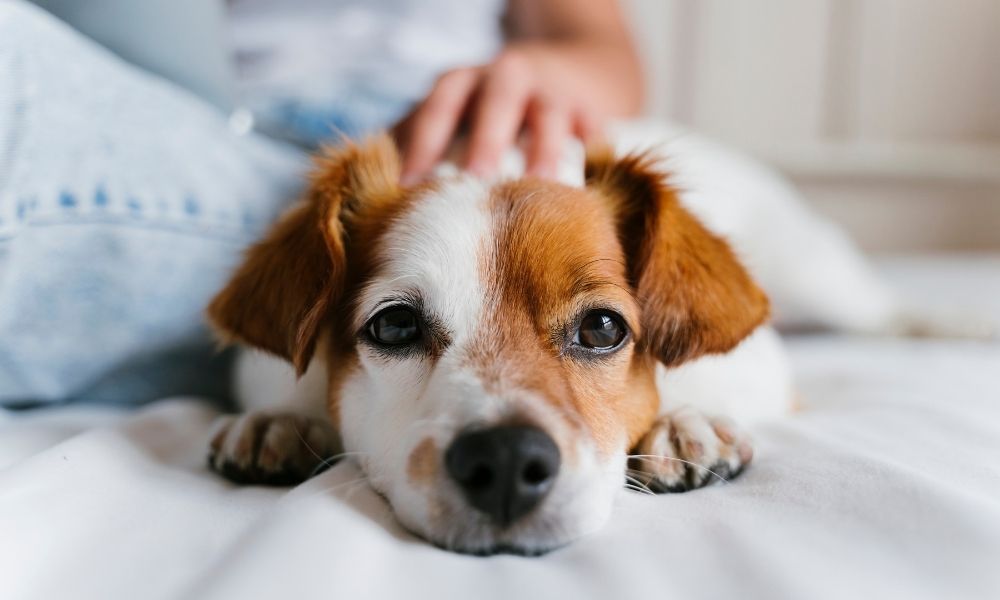
Does your anxious dog exhibit harmful behaviors like chewing on your belongings, barking excessively, or urinating in your house? However your dog acts with anxiety, it can be very frustrating for both of you.
Reclaim your dog’s peace of mind and your own well-being. Though you might have to try other methods down the road, start with these nonmedicinal ways to calm your anxious dog.
1. Give Your Dog Plenty of Exercise
Just like with humans, physical exercise helps keep your dog mentally and physically fit. Walks let dogs stretch their legs and interact with the outside world. Dogs love to sniff around on walks to explore their surroundings.
Exercise your dog at an appropriate level for your dog’s age and physical condition. While younger dogs often enjoy runs, older dogs should be walked slowly if they can handle it. Making walks a routine will help alleviate your dog’s anxiety and help you bond too.
2. Ensure Your Dog Sleeps Well
A good sleep will help your dog recharge and feel better, and a poor-quality dog bed affects your dog’s anxiety. A poor-quality bed can be lumpy, and the fabric can harbor hair, dead skin, and debris such as dirt and grass.
Select a high-quality bed that supports and cushions your dog’s body. Invest in a chew-proof dog bed if your anxious friend has problems with chewing or scratching.
Place your dog’s bed in a calm area in the house so that they’re not disturbed. Keep the dog bed and the floor around it clean.
3. Keep Your Dog Mentally Stimulated
The final nonmedicinal way to calm your anxious dog is to keep your companion mentally stimulated. You can do this in several ways, including:
- Spending one-on-one time with your dog
- Teaching your dog new tricks
- Letting your dog perform tricks he already knows
- Letting him go on a scent walk on a route different from your usual one
- Using enriching toys like puzzle balls or snuffle mats
The first four of these methods require you to interact with your dog. The last method, using enriching toys, gives your dog mental stimulation without your input.
Give your dog ample exercise, ensure he gets quality sleep, and provide him with mental stimulation to help ease his anxiety. These actions also form the basis of healthy living for any dog. If your pet continues to exhibit anxiety, stay positive and patient with your dog, and talk to a veterinarian about the situation.






